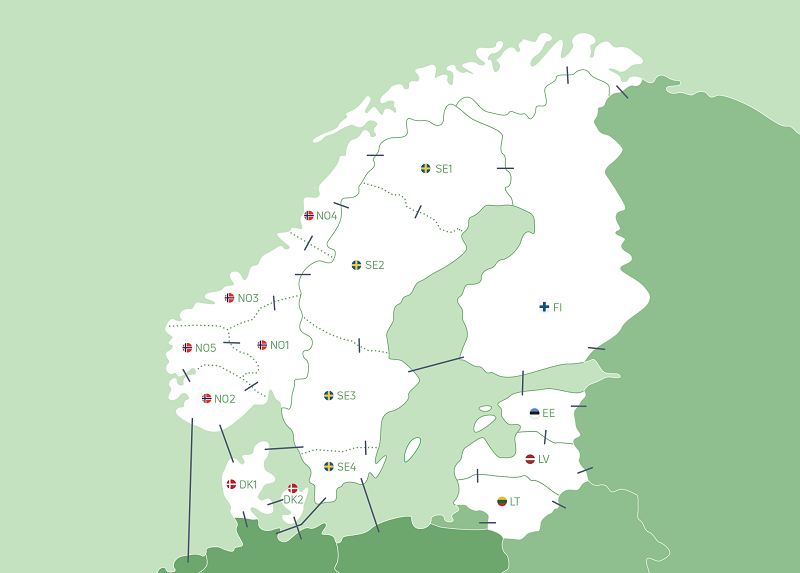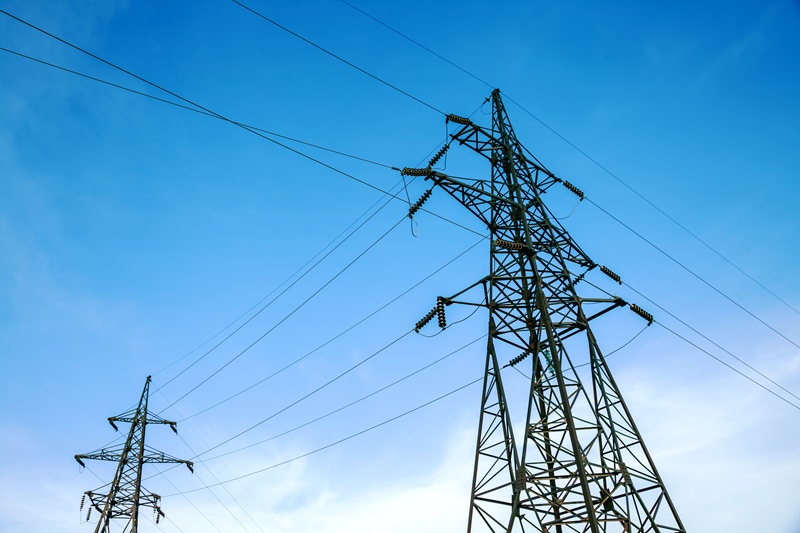The price of electricity is one of the topics that has probably crossed the lips of every person at least once, if not more. The following will explain how the open electricity market works and which factors affect the development of electricity prices.
Since 2013, Estonia has been operating on the Nord Pool open electricity market and power exchange where prices are formed as a result of demand and supply. All Nord Pool countries have at least one price zone, larger countries may have several. The zones are interconnected by cables that transport electrical energy – transmission capacities.
Electricity is produced and supplied to the common electricity network. From there, it moves to where there is demand. If there is a shortage in the Estonian electricity network, we get it from our immediate neighbours. If a neighbour’s electricity network needs additional support, electricity produced in Estonia travels across borders. One could assume that the electricity prices of countries operating on a common market would be the same, but this is not the case.
Electricity prices vary from zone to zone as transmission capacities between countries are limited. However, the general rule is that the more renewable energy a zone produces, the cheaper the price of electricity there. As we know, the production of electricity from fossil fuels puts too much strain on the environment and is therefore taxed at a higher rate.
A simple market economy principle applies to the open electricity market: if there is more demand than supply, the price of electricity is higher; if there is less demand than supply, the electricity price is lower.
How does the exchange price of electricity develop?
Electricity buyers place orders with the power exchange every day for how much electricity their customers will need for the next day. Electricity sellers bid based on this. This reveals the curves of demand and supply, the intersection point of which determines the quantity and price of electricity being produced. Therefore, the price of electricity is not someone’s arbitrariness, but reflects the actual situation of the electricity market.
Units producing electricity from renewable sources, such as wind, water, and sunlight, will be the first to enter the market. Since renewable sources are created by the power of nature and do not produce carbon dioxide harmful to the environment, electricity production is cheaper. If the amount of renewable energy is sufficient to cover the demand, the electricity exchange price will be low.
If renewable sources fail to meet the demand, power plants with more expensive electricity, such as nuclear, oil shale, coal and gas plants will be able to access the power exchange. The electricity generated there is more expensive due to both the fuel and the possible CO2 emission charges.
The exchange price of electricity is determined by the last bidder necessary to cover the market demand. If a gas power plant with the highest price is the last, it will determine the price of electricity for that specific hour. If you ask why, it is because the last producer needed to cover the demand could be compensated for their costs. Due to this, bidders with cheaper production costs win and get more funds for the development of renewable energy.
The more renewable energy providers enter the market, the cheaper the price of electricity becomes.
Yes, but why is the price of electricity still so high sometimes?
If the demand for electricity in the market is so high that electricity producers cannot cover it and the demand-supply curves do not cross, Nord Pool will set the maximum electricity price for that hour – 4,000 eur/MWh. At the moment of consumption, the intraday market always tries to keep supply and demand in balance.
Fluctuations in the exchange price only affect those customers who have chosen electricity packages with exchange prices. Owners of fixed-price electricity contracts pay the agreed fee for electricity. However, what happens on the power exchange affects the development of fixed electricity prices as well: if exchange prices rise, fixed ones will do the same.
The market prices are also affected by maintenance and repair work of power plants and transmission capacities, the addition of new production and the closing of old ones, changes in consumption, the price of fuel, and in the case of renewable energy, how much it rains, how much sunlight there is or how strong the wind is.
Fluctuations in the exchange price only affect those customers who have chosen electricity packages with exchange prices.



